Commander 2016 Mechanics
The Magic: The Gathering—Commander series of products, the latest of which is appropriately called the 2016 Edition, gives players a great way into Commander. Each 100-card deck is ready to battle. But it also gives experienced Commander players all sorts of interesting new options for their existing Commander decks, plus innovative hooks to inspire new decks. This year, the hotness is four-color commanders. Let's take a look at some of the new and returning mechanics you can look forward to.
Partner
The four-color commanders are pretty sweet, but maybe you'd like a little more flexibility in building your four-color decks. Maybe what you really need is a group of two-color legendary creatures with a penchant for working together. Introducing partner.
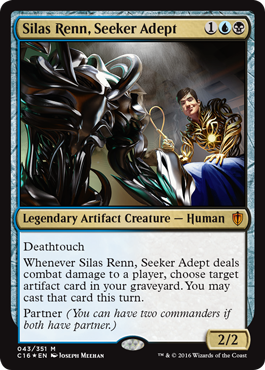
Each card with partner suggests a particular style of Commander deck for you to build. So mixing and matching can yield some fascinating directions. What does it mean to have two commanders? Many awesome things! But I've only shown you one creature with partner. I should show you another. Allow me to introduce you to the scourge of oxen everywhere, straight from the fields of Goma Fada, Bruse Tarl!
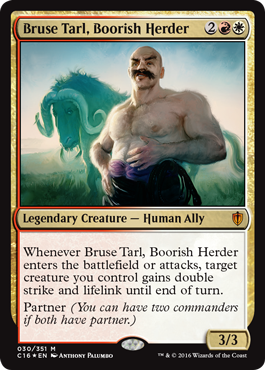
Two creatures with partner can serve as a deck's commander only if both have partner. Ol' Bruse won't work with just anyone, you know. Because both commanders start the game in the command zone, the remaining library is only 98 cards. To determine what cards can be in your deck, use the combined color identity of both commanders. Silas Renn's color identity is blue and black, and Bruse Tarl contributes red and white. So green cards and cards with green mana symbols in the rules text are out, but everything else is allowable.
Your two commanders are treated individually for all other Commander rules. If either leaves the battlefield, you can return it to the command zone instead. The "commander tax," the additional cost of 2 for every time you've cast a commander from the command zone, applies individually. So say you cast Silas Renn, who then dies. Later in the game you cast Silas Renn again, and this time he costs 3UB. Then you cast Bruse Tarl. Silas's "tax" doesn't apply to Bruse Tarl, so you pay 2RW. The next time you cast Silas Renn, it'll cost you 5UB, and so on.
Combat damage dealt by each commander is similarly tracked individually. If either commander can deal 21 or more combat damage to a single player over the course of the game, that player loses. But you have to get all the way there with Silas Renn, or you have to get all the way there with Bruse Tarl.
If any card refers to your commander (or commanders in general), it means either one of the two. So cards like Command Beacon (not in this year's decks, but still a popular option) can fetch either one of your commanders, but not both. Anything that cares whether you control your commander will be satisfied if you control one or both commanders. Cards like Command Tower or Commander's Sphere (totally in this year's decks!) can add mana in either of your commanders' color identities.
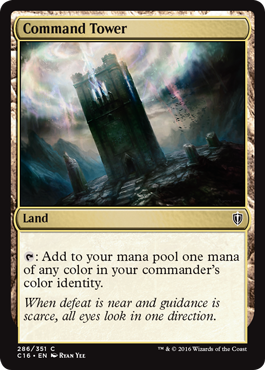
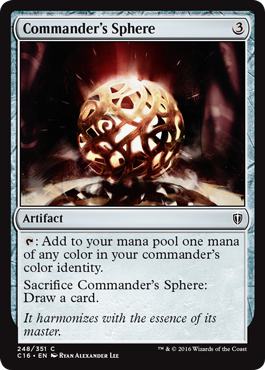
Undaunted
Commander games usually involve a lot of opponents. That may intimidate lesser combatants, but you ain't scared. In fact, spells with the new "undaunted" ability just get better the more opposition you're facing.
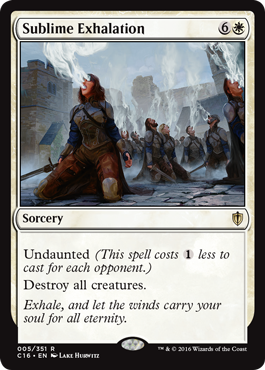
Undaunted is pretty straightforward. Count the number of opponents you have as you're casting the spell. Take that much generic mana off the cost of the spell. Dominate. Even if it's down to two players, you get a 1 discount. Remember, you don't count opponents who've already left the game. The undaunted discount can't affect the colored mana requirements of the spell. So Sublime Exhalation still costs W to cast if you're taking on six or more opponents. And if you are, respect.
Basic Landcycling
There are quite a few returning mechanics represented over the five decks. But one in particular shows up in all five, and I'd love to show you an example.
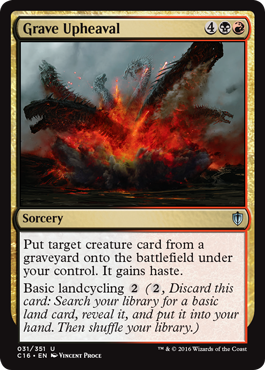
If you're going to play a four-color Commander deck, making sure you have access to the right mana is key. Basic landcycling is a variant of the cycling ability. If a card with basic landcycling is in your hand, you can pay the basic landcycling cost and discard the card. Then you may search your library for a basic land, reveal it, and put it into your hand. Grave Upheaval is great in the late game, bring back the best dead creature you can find, but none of that matters if you can't get to the late game because you're stuck on two lands.
Our Wish Is Your Command
And this year, our wish is for you to have a blast rocking the group of four-color decks that make up Magic: The Gathering—Commander (2016 Edition). Whether you're heading out to a local game store to find new foes or squaring off against your regular group, I'm sure there are plenty of gems that will find a way onto your battlefield. Have fun!

